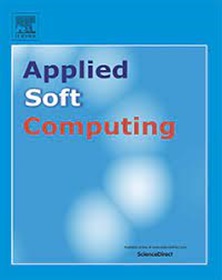Multi-Dueling framework for multi-agent reinforcement learning
IF 7.2
1区 计算机科学
Q1 COMPUTER SCIENCE, ARTIFICIAL INTELLIGENCE
引用次数: 0
Abstract
In real-world tasks, multiple agents often need to coordinate with one another due to their individual private observations and restricted communication abilities. A representative research direction is the deep multi-agent reinforcement learning value decomposition, which decomposes the global shared joint action value function into their respective action value functions to guide the behavior of individuals. They all follow the IGM (Individual-Global-Max) principle, obeying the addable assumption and the monotonic assumption to support effective local decision making. However, to achieve scalability, existing MARL algorithms often compromise either the expressive power of their value function representations or the consistency of the IGM principles. This compromise can potentially result in instability or poor performance when dealing with complex tasks. In this paper, we introduce a novel algorithm called MDF—a Multi-Dueling Framework for Multi-Agent Reinforcement Learning. We innovatively propose the V-IGM constraint principle and correct the incomplete expression of the constant term of the Qatten algorithm to further refine the decomposition of the joint action value function . The MDF algorithm innovatively utilizes the Dueling Network architecture for decomposing the joint action value function . Additionally, it incorporates the multi-attention mechanism to achieve an even more refined decomposition of . Experiments show that MDF algorithm outperforms the most advanced MARL algorithm in StarCraft maps (e.g. 3 m, 8 m, 2m-vs-1z, 2m-vs-1sc, 2s3z, 3s-vs-4z, 3s-vs-5z, 3s5z, 1c3s5z, bane-vs-bane).
多智能体强化学习的多决斗框架
在现实世界的任务中,由于多个智能体各自的私人观察和有限的通信能力,它们通常需要相互协调。一个有代表性的研究方向是深度多智能体强化学习价值分解,将全局共享的联合行动值函数Qtot(τ,u)分解为各自的行动值函数Qi(τi,ui)来指导个体的行为。它们都遵循IGM (Individual-Global-Max)原则,服从可加假设和单调假设,以支持有效的局部决策。然而,为了实现可扩展性,现有的MARL算法通常会损害其值函数表示的表达能力或IGM原则的一致性。在处理复杂任务时,这种折衷可能会导致不稳定或性能差。在本文中,我们介绍了一种名为mdf的新算法,即用于多智能体强化学习的多决斗框架。我们创新地提出了V-IGM约束原则,修正了Qatten算法中常数项c(τ)的不完全表达式,进一步细化了联合作用值函数Qtot(τ,u)的分解。MDF算法创新地利用Dueling网络架构分解联合动作值函数Qtot(τ,u)。此外,它还结合了多注意机制来实现更精细的Qtot(τ,u)分解。实验表明,MDF算法在StarCraftΠ地图(如3 m、8 m、2m-vs-1z、2m-vs-1sc、2s3z、3s-vs-4z、3s-vs-5z、3s5z、1c3s5z、bane-vs-bane)中优于最先进的MARL算法。
本文章由计算机程序翻译,如有差异,请以英文原文为准。
求助全文
约1分钟内获得全文
求助全文
来源期刊

Applied Soft Computing
工程技术-计算机:跨学科应用
CiteScore
15.80
自引率
6.90%
发文量
874
审稿时长
10.9 months
期刊介绍:
Applied Soft Computing is an international journal promoting an integrated view of soft computing to solve real life problems.The focus is to publish the highest quality research in application and convergence of the areas of Fuzzy Logic, Neural Networks, Evolutionary Computing, Rough Sets and other similar techniques to address real world complexities.
Applied Soft Computing is a rolling publication: articles are published as soon as the editor-in-chief has accepted them. Therefore, the web site will continuously be updated with new articles and the publication time will be short.
 求助内容:
求助内容: 应助结果提醒方式:
应助结果提醒方式:


